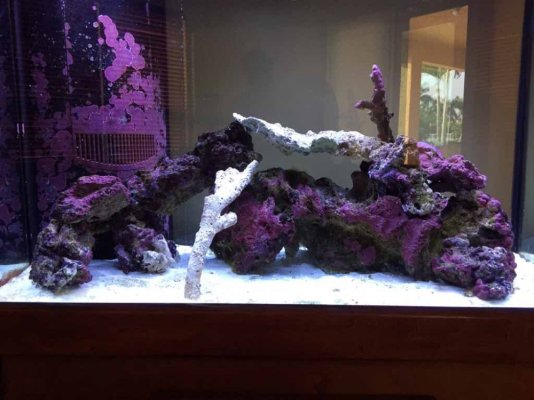Nat_a126
Aquarium Advice Freak
- Joined
- Jan 3, 2014
- Messages
- 356
Okay with the chemicals. It was a shot in the dark but ya never know until you ask.
Yes, the FW dip does stress them for a bit but it's less stressful than what the parasite is doing to the fish. Lesser of 2 evils so to speak.But a healthy fish recovers quickly from this. I did it to fish that were just coming out of acclimation after traveling from overseas for over 24 hours and rarely, and I mean RARELY, did it adversely effect them.
What your rock could be leeching is dependent on what it grew around. I've had pieces come in with metal rods sticking out of them so I really couldn't say for positive what exactly is going on with yours. I don't tell you this to make you panic, just to make you aware that if all else fails, you may want to consider changing the rock for more smaller pieces that you can mound up and create more hiding spots while maintaining swimming areas. One thing that will eliminate this possibility is if you don't do major water changes between you getting new fish. If you didn't, the bad water that killed the previous fish would still be present and the new fish shouldn't be lasting that long before having issues. Again, this is a process of elimination so we are throwing out any possibility to hopefully fix your issue.
What about the phosphate level? Possibly why the algae you are growing is hair algae? As for dipping your rocks, I don't think that's really necessary, eliminate the cause of the growth and you eliminate the need to do that. That or get fish that will take the algae off the rocks for you.
We need to keep concentrating on what's happening the first 2 weeks in your tank. That is long enough for an ammonia buildup to happen. Have you tested your water during that time frame to see if there were any changes? Possibly you are overfeeding and the loss of the fish ( the ammonia producer) gives the BB enough time to catch up so it looks normal when you test?
Next, how about listing your typical tank maintenance routine. Maybe there is something there that we are missing?
Okay I'll stop dipping my rocks. I tested all my levels two days before my fish died and ammonia was 0.
(All my levels on here was two days before he died)
I clean algae off the walls every two weeks, 30% water change once a month (which I'm about to do tomorrow). Remove carbon every 4 months. Dump protein skimmer 1-2 times a week. Add Ro water whenever it needs it.
Sent from my iPhone using Aquarium Advice

